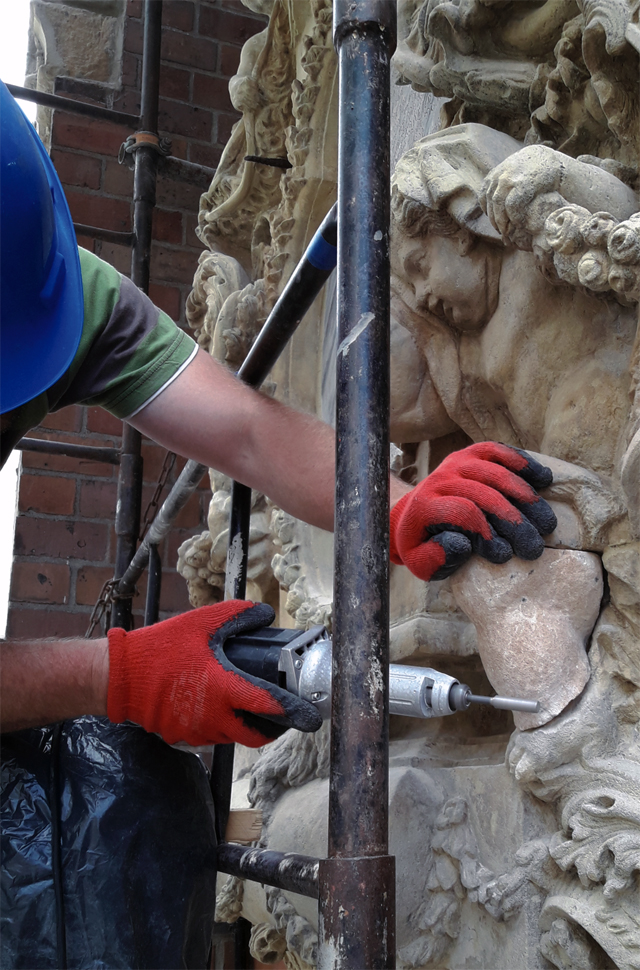IS RESTORATION OF MONUMENTS A CHANCE TO REVIVE THE TRADITION OF HANDICRAFT?

Stonemasons have been working closely with conservators to restore historic buildings and monuments.
Those who engage in this type of work often handle materials and products made of stone. For example, it is not uncommon to repair or remove defects in architectural details using stone and stone putty. Stonemasons also clean the stone and protect it from the weather, mould and other risk factors that can weaken the stone structure.
Another type of activity is to dismount statues and then reinstall them after restoration work has been carried out in specialised workshops. Where necessary, stonemasons replace the damaged stone and place it alongside or directly in place of the original elements.
But let us return to the question we asked in the very title of our article. As somebody dealing with restoration of stone material on a daily basis, I believe that restoration of monuments is a great “exercise area” for manual workers.
Thanks to renovation work, you can learn something new every day by working with different architectural details and different techniques employed by different stonemasons from various historical periods, always from a time when people could still rely solely on the work of their own hands. We can also say that through such activity we are in close contact with the roots of craftsmanship.
These are not just empty words! Every new commission presents a challenge. You can encounter buildings constructed in different architectural styles using different types of stone – both structurally and decoratively – sacral buildings, buildings with a utilitarian function and residential buildings. Each of these buildings requires a specific approach to the work carried out.
To achieve the best possible result and for the reconstructed or repaired element to faithfully reflect the characteristic features of the building as a whole, we must employ the original techniques. This allows us to acquire skills that are not currently taught at any stonework school in Poland.
Source: Kurier kamieniarski
Author: Dariusz Dembiński | Published: 17 September 2018
